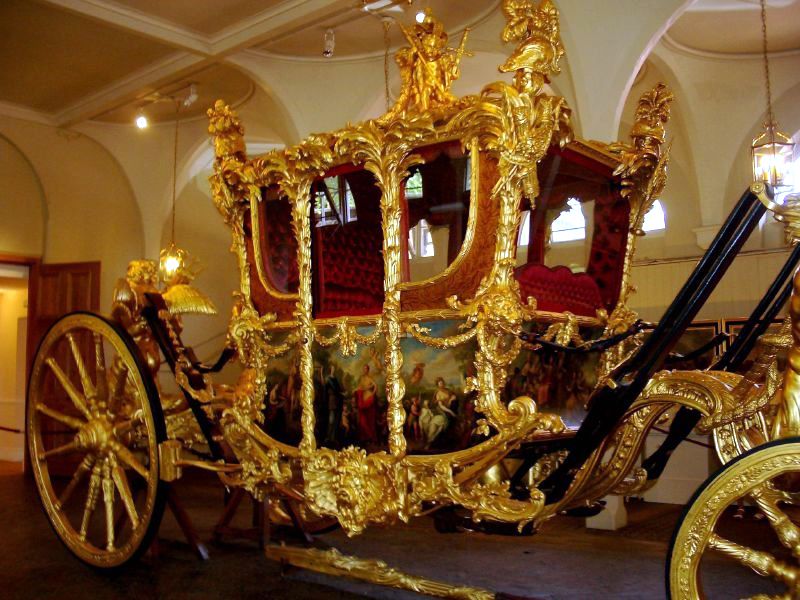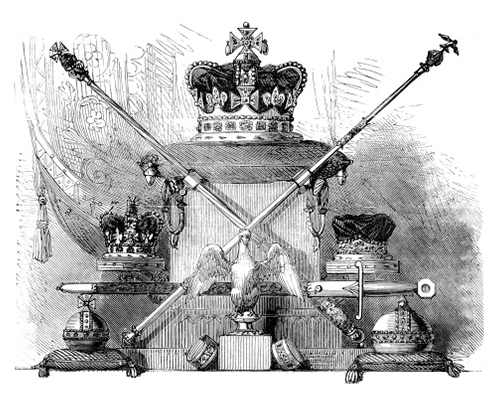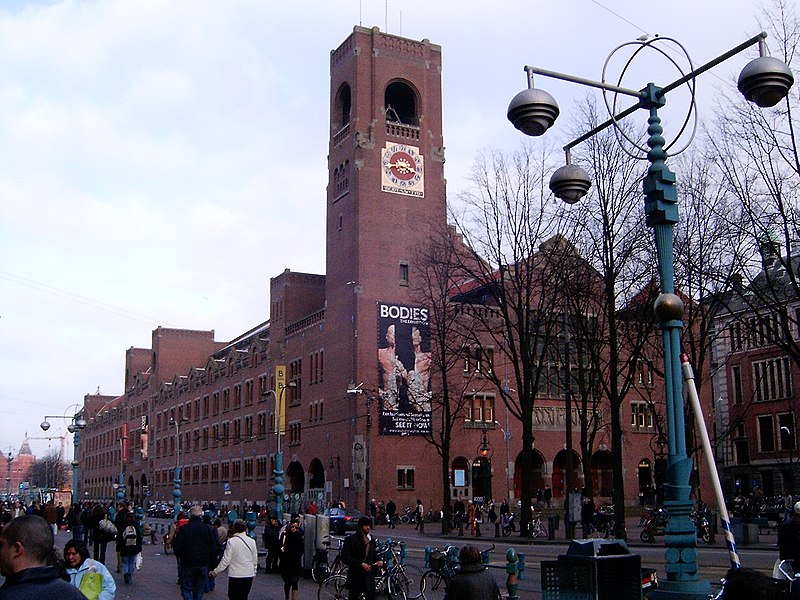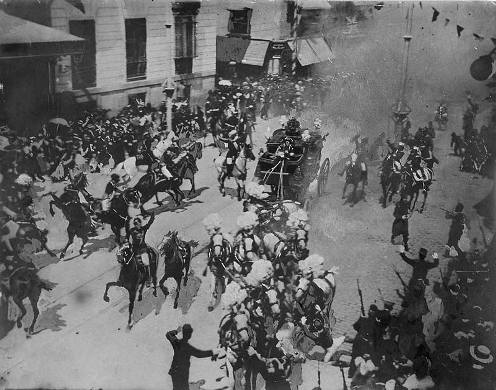by Susan Flantzer © Unofficial Royalty 2017
Crown Prince Harald of Norway (the future King Harald V of Norway) and Sonja Haraldsen were married on August 29, 1968, at the Oslo Cathedral in Oslo, Norway.
King Harald V’s Early Life

Harald in his mother’s arms with his family; Photo Credit – Wikipedia
King Harald V of Norway was born on February 21, 1937, at Skaugum, the residence of the Crown Prince, in Asker, Norway. His parents were Crown Prince Olav of Norway (later King Olav V) and Princess Märtha of Sweden. At the time of Harald’s birth, his grandfather, King Haakon VII (born Prince Carl of Denmark, son of King Frederik VIII of Denmark) was the monarch and his grandmother, Queen Maud (born Princess Maud of Wales, daughter of King Edward VII of the United Kingdom) was his consort. King Harald is closely related to several European monarchs: King Philippe of Belgium and Grand Duke Henri of Luxembourg are his first cousins once removed, Queen Elizabeth II of the United Kingdom and Queen Margrethe II of Denmark are his second cousins, and King Carl XVI Gustaf of Sweden is his second cousin once removed. King Harald has two older sisters: Princess Ragnhild (1930 – 2012) and Princess Astrid (born 1932).
In 1940, when Harald was just three years old, Germany invaded Norway. To avoid being taken into custody by the Germans, the Norwegian Royal Family along with many members of the Government and the Storting (legislature) left Norway. Crown Princess Märtha and her three children, Princess Ragnhild, Princess Astrid, and Prince Harald, fled to Sweden, Märtha’s native country. King Haakon VII (Queen Maud had died in 1938) and Crown Prince Olav fled to London where they stayed with the Norwegian government in exile for the duration of World War II.
After staying in Sweden for several months, Crown Princess Märtha and her three children traveled to the United States by ship. President Franklin Roosevelt offered refuge to Crown Princess Märtha and her children. They stayed briefly at Roosevelt’s Hyde Park estate in New York State and then at the White House. Eventually, they settled into a Tudor-style mansion in Bethesda, Maryland, a suburb of Washington, DC. Crown Princess Märtha worked quietly behind the scenes to support the war effort. The family members were special favorites of President Roosevelt and when he took his fourth and final oath of office at the White House, an 8-year-old Prince Harald was standing behind him.
Harald returned to Norway in June 1945 with his mother and his sisters. That autumn, he began to attend Smestad School in Oslo. In 1955, Harald graduated from the Oslo Cathedral School. He then entered the Norwegian Cavalry Officers’ Training School and went on to finish his military education at the Norwegian Military Academy in 1959. After Harald finished his compulsory military service, he studied social science, history, and economics at Balliol College, Oxford University in Oxford, England from 1960 – 1962.
Harald’s mother Crown Princess Märtha died of cancer in 1954 at the age of 53. On September 21, 1957, when Harald’s grandfather King Haakon VII died, Harald’s father became King Olav V, and Harald became Crown Prince. Harald attended the Council of State and acted as Regent in the King’s absence. He worked closely alongside his father and carried out an increasing number of official tasks, such as traveling with trade delegations to promote the Norwegian industry abroad.
When he was Crown Prince of Norway, Harald’s father King Olav V had won an Olympic Gold Medal for Sailing Mixed 6 Meters in the 1928 Summer Olympics in Amsterdam. Although he did not win a medal, Harald followed in his father’s footsteps and represented Norway in Sailing events in three Summer Olympics: 1964/Tokyo, 1968/Mexico City, 1972/Munich.
Harald became King of Norway upon the death of his father on January 17, 1991.
Sonja Haraldsen’s Early Life
Sonja Haraldsen was born on July 4, 1937, in Oslo, Norway, the youngest of the four children of Karl August Haraldsen (1889 – 1959) and Dagny Ulrichsen (1898 – 1994). Her three siblings were Haakon Haraldsen (1921 – 2016), Gry Henriksen (1924 – 1971) and Karl Herman Haraldsen (1929 – 1936, who died in a boating accident).
Sonja grew up at 1B Tuengen Allé in Vinderen, Oslo, Norway, one of the wealthiest areas of Oslo. After her elementary education, Sonja received her secondary education at Oslo Vocational School where she studied dressmaking and tailoring. This was a useful course of study as her family owned a clothing store. Sonja then attended a finishing school in Lausanne, Switzerland, École Professionelle des Jeunes Filles, where she studied social science, accounting, and fashion design. When she returned to Norway, Sonja attended the University of Oslo where she studied French, English, and Art History and received an undergraduate degree.
The Engagement

Engagement Photo; Photo: ATF
In June 1959, Crown Prince Harald attended a party hosted by a friend, Johan Stenersen. At this party, he met another friend of Johan Stenersen, Sonja Haraldsen. In August 1959, when the Crown Prince graduated from the Norwegian Military Academy, he invited Sonja to attend the graduation ball, and the couple was photographed together.

Crown Prince Harald of Norway and Sonja Haraldsen at the Norwegian Military Academy Graduation Ball in August of 1959; Photo source: ATF
The relationship between the Crown Prince and Sonja was controversial as many people including politicians and journalists, felt the Crown Prince should marry a princess and not a Norwegian commoner. The controversy continued for years as did the relationship despite the media’s attempts to promote a royal marriage with either of the Greek princesses Sophia and Irene. Crown Prince Harald made it clear to his father, King Olav V, that he would remain unmarried if he could not marry Sonja. This would have resulted in a succession crisis as Harald was the sole heir to the throne. At that time, Norway did not allow female succession, so his two sisters Ragnhild and Astrid were not in the line of succession.
Finally, in 1968, when King Olav felt the position of the Norwegian people had changed to favor Sonja, he consulted with parliamentary leaders and other government leaders and gave his consent for the Crown Prince to marry a commoner. The engagement of the couple was announced on March 19, 1968, with this announcement from King Olav V: “It is with pleasure that I inform you, Mr. President and Members of the Storting, that I, after seeking advice from the Prime Minister, members of the Government, you, Mr. President, and the parliamentary leaders of the political parties, have today given my consent to my dear son, Crown Prince Harald, to take as his wife Miss Sonja Haraldsen, daughter of the late Mr. Karl August Haraldsen and Mrs. Dagny Haraldsen née Ulrichsen.”
Harald gave Sonja an unusual diamond and ruby ring that belonged to his late mother, Crown Princess Märtha. Queen Sonja carried on the tradition, giving the ring to her son Crown Prince Haakon when he proposed to Mette-Marit Tjessem Høiby.
Pre-Wedding Festivities

The day before the wedding there was a gala dinner at Akershus Castle in honor of the bride and groom. Here Sonja picks up the handkerchief that Magnhild Borten, Prime Minister Per Borten’s wife, has dropped; Photo Credit – http://www.arkivverket.no/eng/Using-the-Archives/Online-Exhibitions/Royal-weddings-in-Norway-in-1929-and-in-1968
Unfortunately, two sad events put a damper on the wedding celebrations. On the night of August 20-21, 1968, the Soviet Union invaded Czechoslovakia. Then, on August 27, 1968, Princess Marina, Duchess of Kent, a close friend of King Olav V, and born a Princess of Greece and Denmark, suddenly died. The previous month, Princess Marina spent several days in the hospital, where it was discovered that she was suffering from an inoperable brain tumor. Sadly, her condition diminished very quickly. It was only several hours before her death that the severity of her condition became public when Kensington Palace issued a statement that her condition “was giving rise to anxiety.” When the news of the death of Princess Marina, Duchess of Kent, arrived in Oslo, some press questioned whether King Olav would decide to postpone the wedding due to his closeness to the British Royal Family. Princess Marina was the widow of Prince George, Duke of Kent. a first cousin of King Olav. Olav’s mother Queen Maud and George’s father King George V of the United Kingdom were siblings. However, it was decided that the scheduled event for August 27, 1968, would be canceled in protest of the Soviet invasion and in memory of Princess Marina. The first day’s event, a grand ball, was instead, a smaller dinner held at the Royal Palace for the royal guests that had arrived during the day.
On August 28, 1968, King Olav, Crown Prince Harald, Sonja Haraldsen, and their guests attended a modern art exhibition in the Høvikodden Art Center in Bærum, outside Oslo. Next, ship-owner Niels Werring and his wife, the Mistress of the Robes, Else Werring hosted a luncheon for the members of the European royal families that had gathered to celebrate the wedding. In the evening, the Government of the Kingdom of Norway hosted a gala state banquet for 350 guests in honor of the Crown Prince and Miss Haraldsen at Akershus Castle.
Wedding Guests
850 guests attended the wedding ceremony. Queen Elizabeth The Queen-Mother of the United Kingdom was set to attend the wedding. However, the unexpected death of Princess Marina, Duchess of Kent on August 27, 1968, made the attendance of any member of the British Royal Family impossible. Six heads of state attended the wedding: four monarchs and two presidents. Below is a partial guest list.
- Princess Ragnhild of Norway, the groom’s sister, and her husband Mr. Erling Lorentzen
- Princess Astrid of Norway, the groom’s sister, and her husband Mr. Johan Martin Ferner
- Mrs. Dagny Haraldsen, the bride’s mother
- King Frederik IX and Queen Ingrid of Denmark
- Princess Margrethe of Denmark (the future Queen Margrethe II) and her husband Prince Henrik
- King Gustaf VI Adolf of Sweden
- King Baudouin of the Belgians
- Grand-Duke Jean and Grand-Duchess Joséphine-Charlotte of Luxembourg
- Prince Claus of the Netherlands, representing his mother-in-law Queen Juliana of the Netherlands
- Princess Margaretha of Denmark, born Princess of Sweden, maternal aunt of the groom
- Prince George of Denmark, maternal first cousin of the groom and his wife Princess Anne
- Countess Ruth of Rosenborg, wife of Count Flemming (younger son of Princess Margaretha of Denmark), supporter to Crown Prince Harald
- Prince Carl Bernadotte, maternal uncle of the groom
- Countess Madeleine Ullens de Schooten, maternal first cousin of the groom, and her husband Count Charles Ullens de Schooten
- President Urho Kekkonen of Finland and Mrs. Kekkonen
- President Kristján Eldjárn of Iceland and Mrs. Eldjárn
- The Government of the Kingdom of Norway and the Diplomatic Corps
Wedding Attendants
- Groom’s Supporter: Count Flemming of Rosenborg, son of Princess Margaretha of Denmark, sister of the groom’s mother, and the late Prince Axel of Denmark
- Maid of Honor: Miss Ilmi Riddervold
- Bridesmaids: Miss Ian Henriksen, Miss Anita Henriksen, Miss Ingeborg Lorentzen, and Miss Lis Haraldsen
Wedding Attire

The future King Harald V and Queen Sonja; Photo: Royal Order of Sartorial Splendor
Crown Prince Harald wore the black gala uniform of the Norwegian Army, with the sash of the Grand Cross of the Royal Norwegian Order of St. Olav with star, the Star of the Swedish Order of the Seraphim, and the Star of the Danish Order of the Elephant. The Crown Prince’s supporter, his first cousin, Count Flemming of Rosenborg, wore his Danish naval uniform with the sash of the Grand Cross of the Royal Norwegian Order of St. Olav with star and the Star of the Danish Order of the Elephant.
Sonja Haraldsen’s bridal gown, created by Oslo clothing store Molstad, was simple and classically styled, with three-quarter length sleeves and a long train, and was decorated with white pearls and embroidery. She wore a long tulle veil and carried a bouquet in shades of white, with white roses, freesias, lilies of the valley, and orchids. The bride chose not to wear a tiara.
Wedding Ceremony

Wedding at Oslo Cathedral; Photo Credit – Wikipedia
The wedding was held on August 29, 1968, at 5:00 PM at the Oslo Cathedral in the presence of 850 guests. Crown Prince Harald, accompanied to the cathedral by his supporter Count Flemming of Rosenborg, was loudly cheered as he traveled from the Royal Palace to the cathedral. Because the bride’s father was deceased and to show his support for his soon-to-be daughter-in-law, King Olav accompanied the bride to the cathedral and then escorted her down the aisle to Henry Purcell’s “Trumpet Tune and Air.”

King Olav V escorting the bride down the aisle; Photo: Royal House of Norway
Dr. Fridtjov Birkeli, Bishop of Oslo conducted the traditional, brief Lutheran wedding ceremony. The ceremony began with the psalm “Herre Gud, ditt dyre navn og ære” (Our Lord God, Your Precious Name and Honor) sung by the “Den Norske Studentersangforening” (The Norwegian Student Choir) and continued with the congregation singing Bernt Støylen’s psalm “Til kjærleik Gud oss skapte, til kjærleik hjarta trår” (In Love God Created Us). Next, the Bishop of Oslo gave his sermon where he said that “a new and very strong link has been created between the royal family and the Norwegian people,” referring to the bride and future queen being a Norwegian commoner.
The exchanging of vows came next. The couple knelt to exchange rings and receive the bishop’s blessing. The new Crown Princess of Norway curtseyed to her father-in-law, King Olav of Norway, and returned with her husband to their seats. The ceremony continued with a reading from the Bible and a prayer. The Norwegian opera singer Aase Nordmo Løvberg then sang Grundtvig’s psalm “Alt står i Guds Faderhånd” (Everything Rests in God the Father’s Hand) which concluded the ceremony.
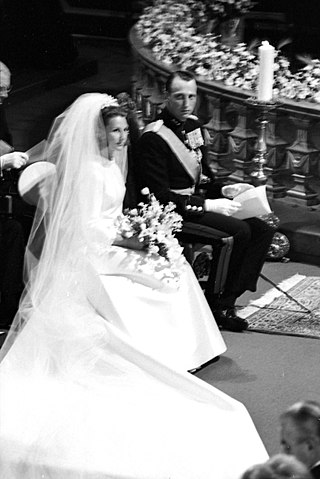
Photo Credit – Wikipedia
The bride and groom exited the cathedral to Johann Sebastian Bach’s “Prelude in E Major” and were met with jubilation and cheers of congratulations by the large crowds waiting outside. Two 21-gun salutes were fired from Akershus Fortress. King Olav V and Mrs. Dagny Haraldsen followed their children down the aisle and watched, with the royal guests, as the couple left the cathedral in an open car, driving through the streets of Oslo and being cheered by large crowds lining the streets.
The Wedding Reception

King Olav V, Crown Princess Sonja, Crown Prince Harald on the Royal Palace balcony; Credit – Wikipedia
King Olav V hosted 225 guests at a wedding banquet and dance in the Oslo Royal Palace. The newlyweds arrived at 7:00 PM and appeared on the balcony of the Royal Palace, delighting the enormous crowd. King Olav V joined the couple on the balcony, again to the great pleasure of the crowd. The banquet took place in the grand dining room. The Crown Prince and Crown Princess of Norway sat at the main table, decorated with pink roses, with the King of Norway on the right of the new Crown Princess and Princess Margaretha of Denmark on the left of Crown Prince Harald. The six heads of state and their spouses joined them at the main table. During the banquet, King Olav V, Crown Prince Harald, and Bernt Ingvaldsen, President of the Storting (legislature) all gave speeches.
After the end of the banquet, the guests moved to the beautiful ballroom. To the music of a waltz specially composed for the occasion, Crown Prince Harald and Crown Princess Sonja opened the wedding ball while their guests looked on. Moments later, their guests joined them in the dance.

The newlyweds dance their waltz; Photo Credit – Wikipedia
Children

Left to right: Crown Princess Sonja, King Carl XVI Gustav of Sweden, Princess Märtha Louise, King Olav V of Norway, Crown Prince Harald holding Prince Haakon and Princess Astrid of Norway, 1974; Credit – Wikipedia
Harald and Sonja had two children:
- Princess Märtha Louise, born 1971, married Ari Behn, divorced 2017, had three daughters
- Crown Prince Haakon Magnus, born 1973, married Mette-Marit Tjessem Høiby, had one daughter and one son
This article is the intellectual property of Unofficial Royalty and is NOT TO BE COPIED, EDITED, OR POSTED IN ANY FORM ON ANOTHER WEBSITE under any circumstances. It is permissible to use a link that directs to Unofficial Royalty.
Works Cited
- Arkivverket – Riksarkivet, statsarkivene og Samisk arkiv. “1968 – Crown Prince Harald And Sonja Haraldsen – Arkivverket”. Arkivverket.no. N.p., 2017. Web. 30 Apr. 2017.
- “King Harald V Of Norway”. Unofficial Royalty. N.p., 2017. Web. 30 Apr. 2017.
- “Norway’s Prince Harald Weds Commoner In Oslo”. Timesmachine.nytimes.com. N.p., 2017. Web. 30 Apr. 2017.
- “Queen Sonja Of Norway”. Unofficial Royalty. N.p., 2017. Web. 30 Apr. 2017.
- “The Royal Wedding In 1968”. Royalcourt.no. N.p., 2017. Web. 30 Apr. 2017.
- “The Wedding Of HRH Crown Prince Harald Of Norway And Miss Sonja Haraldsen”. Angelfire.com. N.p., 2017. Web. 30 Apr. 2017.























